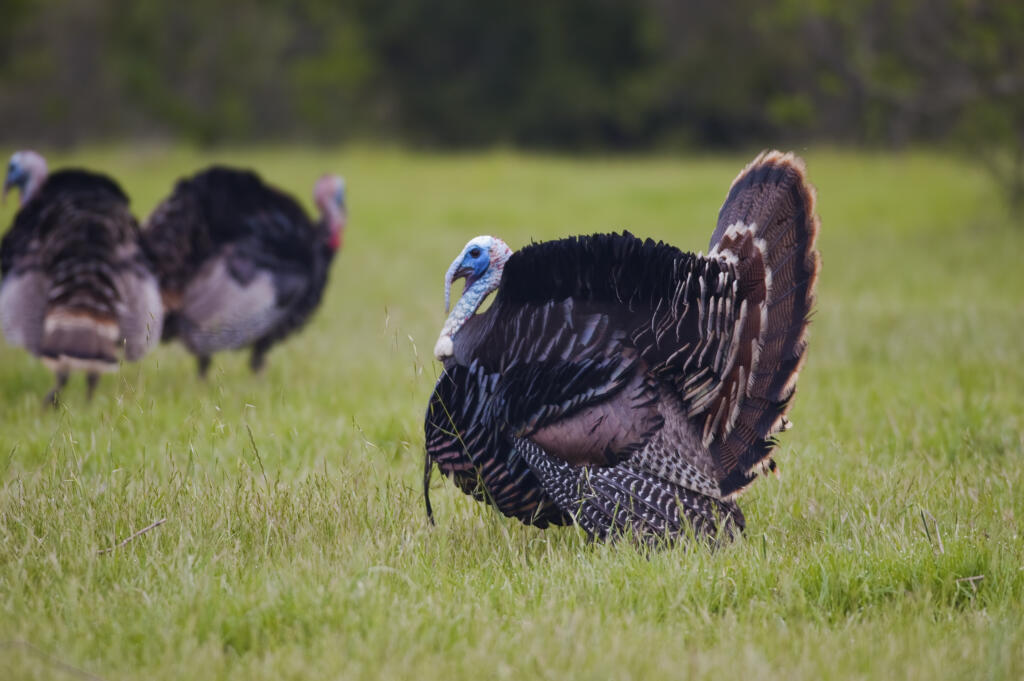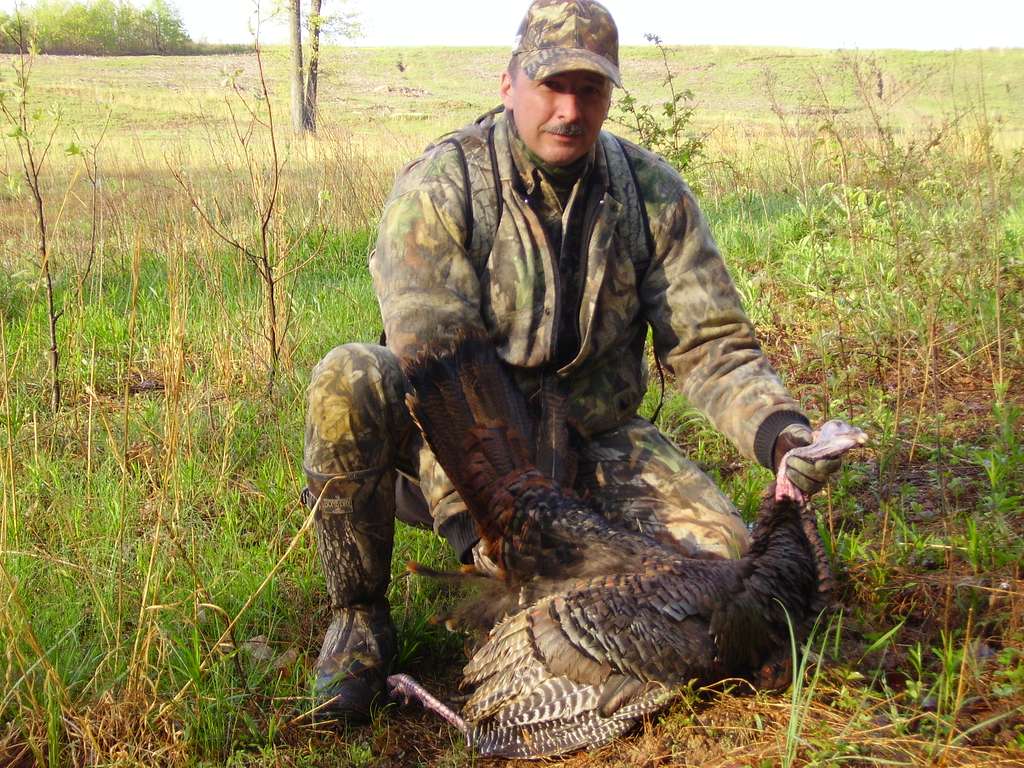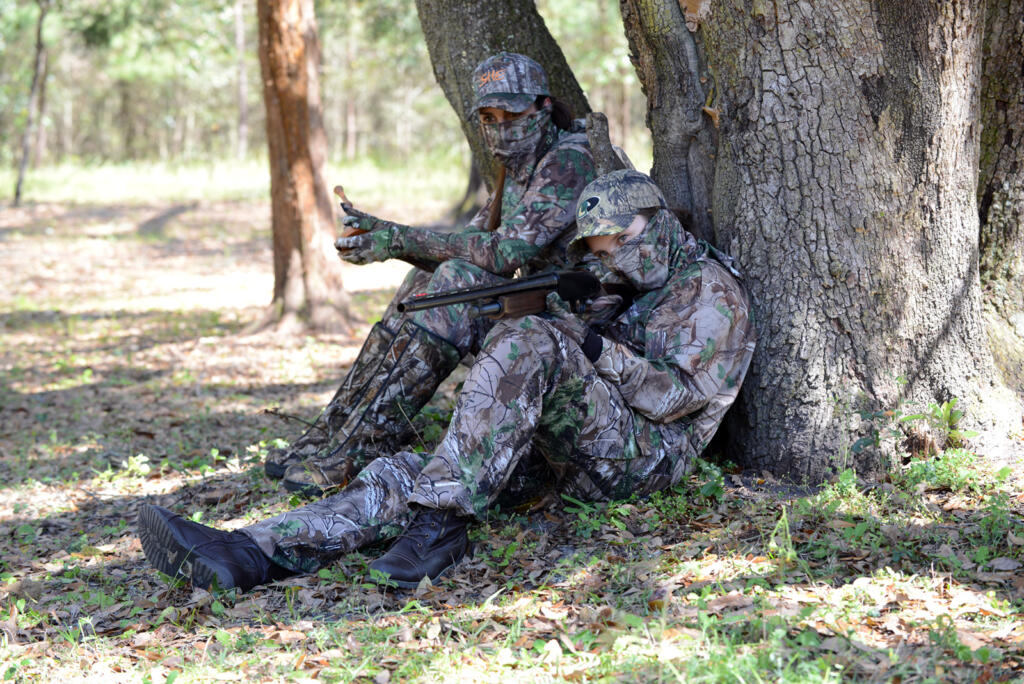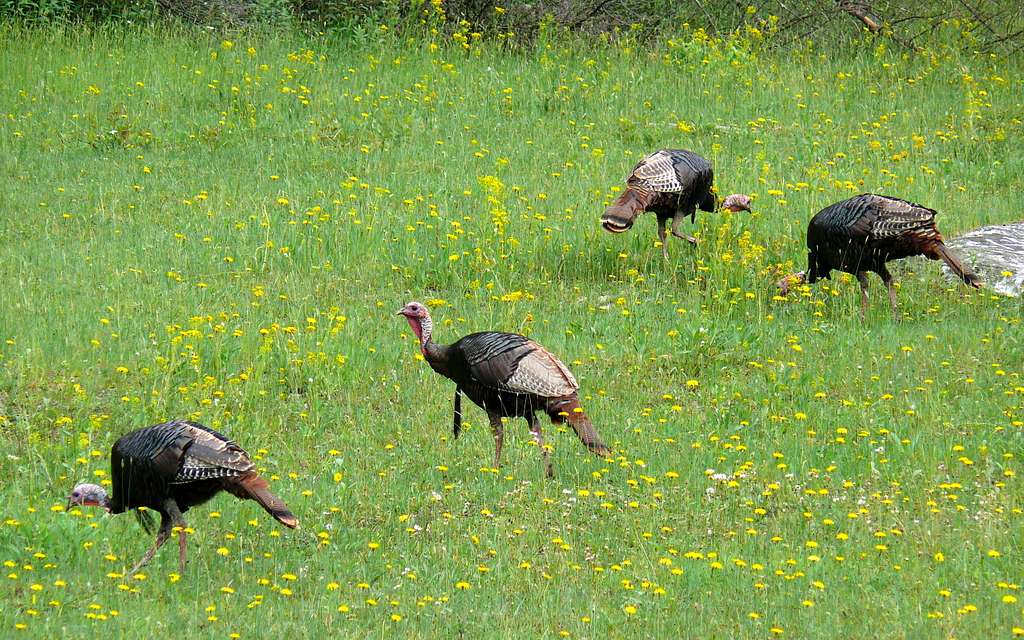Let’s Hunt: Spring Turkeys in the Pacific Northwest
This guide continues our Let’s Hunt & Fish series—your go-to for seasonal tips, regional breakdowns, and real-world strategies to make the most of every tag and every trip.
Spring turkey season opens April 15 in both Washington and Oregon, kicking off what many consider the true start of backcountry season. After a long winter, it’s a welcome excuse to shake out your gear, scout new country, and spend a few quiet nights off-grid before the summer crowds arrive. Whether you’re tucked into a timberline saddle in northeast Washington or glassing oak ridges in southwest Oregon, chasing spring gobblers is as much about the reset as it is the hunt.
The season runs six weeks in both states and offers generous limits—up to three toms in Oregon and three in Washington, with some regional restrictions. Tags are over-the-counter, access is widespread, and birds get vocal fast once the season opens. That early window is prime time for calling in responsive toms, especially if you’ve done your homework and pinned down roost locations.
Unlike high-elevation big game hunts that rely on draw odds and long approaches, turkey season rewards a different skill set: reading terrain, calling with confidence, and staying patient when the woods go quiet. It’s low-barrier, high-reward hunting that emphasizes strategy over gear. Just make sure you’ve got a valid license and turkey tag—and check your state’s regulations for specific unit rules and harvest limits.

Know Your Birds
Three turkey subspecies roam the Pacific Northwest, each with different habits, terrain preferences, and ranges. Knowing what you’re hunting—and where—is key.
Rio Grande Turkey
This is the dominant bird in Oregon, thriving across the state thanks to decades of successful transplants. You’ll find them in the oak foothills of the southwest, the Blue Mountains, and much of the eastern half of the state. In Washington, smaller populations exist in places like Walla Walla, Yakima, and Asotin counties. They favor open woodlands near water and adapt well to rangeland transitions.
Merriam’s Turkey
Merriam’s are the classic mountain bird—white-tipped fans, loud gobbles, and a preference for high country. In Washington, they’re most common in the northeast and south-central regions (think Stevens, Lincoln, and Klickitat counties), where pine forests and steep draws give them the cover they like. In Oregon, they’re less widespread, but some still hang on along the eastern border and parts of the Cascades near Mt. Hood.
Eastern Turkey
Easterns are mostly limited to pockets of western Washington—Cowlitz, Lewis, and Thurston counties see the most activity. These birds were introduced from the East Coast and tend to favor wetter, low-elevation mixed forests. There’s no significant population of Easterns in Oregon.

Where to Hunt: Oregon
Turkey hunting in Oregon has evolved from a regional activity in the southwest to a full-state opportunity. Thanks to favorable winter conditions and strong brood survival, the 2025 season is shaping up to be one of the best in recent memory.
Southwest Oregon: Melrose, Rogue, Evans Creek & Applegate
This region remains Oregon’s turkey stronghold. The Melrose Unit posts the state’s highest success rate—nearly 70%—but most of that harvest comes from private land. Rogue strikes a better balance between bird density and public access—about 57% of the unit is open to hunters. Look for productive ground around Butte Falls and Dead Indian Memorial Road. Evans Creek continues to rise in popularity with DIY hunters thanks to solid success rates and a decent public-private split. Meanwhile, Applegate often gets overlooked but can be a strong late-season choice when hunting pressure elsewhere has eased.
Willamette Valley: Private Land & Reservation Hunts
The Willamette Unit consistently produces high harvest numbers, but access is a challenge. Nearly all turkeys here are on private land. Oregon’s Hunt by Reservation Program opens limited access through spring lotteries and remains the most effective way to hunt the valley without private land contacts. It’s a must-watch option for hunters in March and April.
Quick Tip: The Hunt by Reservation program offers both lottery and first-come-first-served slots. Some properties also participate in Oregon’s Access & Habitat program for general public access—another good option if you miss the draw.
Western Cascades: Dixon & Indigo Units
While bird numbers in the Western Cascades are lower and more scattered, public land is easier to come by. Focus your efforts on transitional habitat—where forest meets grass edges—and you may find birds tucked into surprising pockets. Both Dixon and Indigo can produce, especially if you put in time to locate roost trees and feeding routes.
Northwest Oregon: Trask, Santiam, McKenzie & Scappoose
Northwest Oregon presents more of a challenge. Turkey populations are thin and patchy, concentrated along oak meadows and ag fields near towns like Kings Valley and Philomath. Some smaller timber companies allow walk-in hunting, but it’s rarely publicized—check websites or call ahead to confirm access rules.
Eastern Oregon & the Blues: White River, Heppner, Mt. Emily & Northside
Eastern Oregon has become a major turkey producer, responsible for nearly half the state’s spring harvest in 2024. White River and Heppner offer excellent public land access, while Mt. Emily and Northside reward those who focus on snowline green-up zones and open slopes. While fires in 2024 may have altered some movement patterns, overwintering surveys point to healthy flocks across these units.
Central Oregon: Ochoco & Maury
Turkey numbers continue to expand here, though they remain moderate compared to other regions. Most birds are found along lower-elevation forest edges and south-facing slopes. These units don’t draw much pressure and offer a solid public land option for hunters willing to scout and hike.
South Central & Southeast: Klamath, Lake & Harney Counties
Bird numbers thin out the further south and east you go. In Klamath County, huntable populations remain in the Keno and Pokegema units, where access typically comes through private timber lands like Green Diamond. In Lake and Harney counties, turkeys are sparse but can be found near riparian corridors or at the forest fringe—expect to cover ground and rely heavily on maps and local intel.

Where to Hunt: Washington
Though turkeys aren’t native to Washington, they’ve adapted well over the past 60 years. With Merriam’s, Rio Grandes, and Easterns now established across five of six wildlife regions, spring hunters can find success in a wide range of terrain. Here’s what to expect by region.
Northeast Washington: GMUs 101–136
This is Washington’s top turkey destination, offering the highest bird densities and the most reliable access. Covering parts of the Colville National Forest, these units hold a healthy mix of Merriam’s and Rio Grande turkeys. Public land is abundant, and early season hunts often produce high gobbling activity. From timbered ridges to open meadows and creek-bottom travel corridors, this region consistently delivers.
Southeast Washington: GMUs 142–149
While less accessible than the northeast, the southeast holds strong bird populations—especially along riparian corridors and ag-field edges. Most land is private, so pre-season planning and landowner permission are critical. For those who line up access, it’s one of the state’s most rewarding regions, particularly later in the season when gobblers are more responsive.
Klickitat County: GMUs 568–578
In the south-central part of the state, Klickitat County offers a drier, more open feel and is home to solid Merriam’s populations. These birds tend to break up early and respond aggressively to calling in the first few weeks of the season—especially in open oak savannas and low canyons. A mix of public land and private timber parcels gives hunters flexibility—just be sure to check land use rules ahead of time.
Palouse Region: GMUs 154–162
Though often overlooked, the Palouse holds more turkeys than you might expect. Birds concentrate in creek bottoms and wooded draws that cut through rolling wheat country. Public access is minimal, but WDFW’s Private Lands Access Program includes some walk-in hunting areas in this region—worth researching if you don’t have landowner contacts.
Western Washington: Cowlitz, Lewis, Grays Harbor & Thurston Counties
While numbers west of the Cascades are low, small flocks of Easterns persist—mostly in low-elevation mixed forests near ag edges. Access is almost entirely private, so success here hinges on visible scouting and permission. For local hunters looking to stay close to home, it’s a hunt worth considering.

Resources to Scout and Plan
ODFW & WDFW Harvest Reports – View past unit-level success and effort stats
Access & Habitat / Private Lands Programs – Get onto private land through permission or public access partnerships
Hunt by Reservation (OR only) – Apply early for high-density turkey properties
onX / Avenza – GPS-ready land ownership maps for offline navigation
Game Management Unit Info (WA only) – Get a clear understanding of where, when, and what to hunt.
Wrap It Up (and Tag That Bird)
You already know the basics—but it never hurts to double-check before heading out. Here’s what we always recommend:
- Positively ID your target. Don’t shoot at sound or movement—make sure it’s a turkey, every time.
- Treat every call like it could be another hunter. Never stalk gobbles, even if they sound convincing.
- Avoid red, white, blue, and black clothing. These are the same colors found on a tom’s head and neck, and wearing them could put you at risk. Stick to camo or muted earth tones—brown, green, gray, or olive—and don’t forget to cover your hands and face.
- Tag it before you move it. Make it automatic: once the bird’s down, tag it immediately—before the grip-and-grins start.
Turkey hunting is one of the most rewarding and accessible seasons out there—but it also puts a lot of people in the same areas, often calling to the same birds. A little extra caution and a lot of respect—for other hunters, private landowners, and the birds themselves—go a long way. So stay sharp, stay safe, and have a good time out there.
We’ll see you on the road—or off it.
